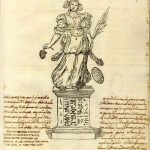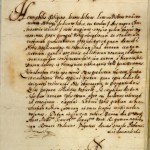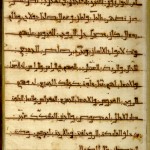Important August 2013 Update: The Kircher Correspondence is once again available as before, via the Luna Insight browser. Since its most recent migration we have found a few (hopefully minor) indexing irregularities, and the highest-resolution zoom is not functioning because of the outdated file format, but otherwise the database appears to be complete.
We apologize humbly for the overly-long hiatus in access to the Kircher Correspondence, and we reaffirm Stanford’s commitment to keep the collection accessible to the international research community. Please stay tuned for future announcements about improvements in access and function.
Note: In order to consult the Kircher correspondence, it is first necessary to download and install the Luna Insight software.
About the Correspondence
During his lifetime, the Jesuit polymath Athanasius Kircher (1602-1680) was widely regarded as the physical embodiment of all the learning of his age. He had over 760 correspondents, including scientists, Jesuit missionaries and world potentates. The subjects discussed in his voluminous correspondence cover the entire range of his interests. Letters sent to Kircher were commonly accompanied by curious natural objects or artefacts for Kircher’s expanding collection in Rome and reports of astronomical observations or experiments performed by the global network of Jesuit missionaries. In return, Kircher sent his powerful patrons medicines and balsams produced in the pharmacy of the Jesuit college in Rome, and elaborate machines of his devising such as the Mathematical Organ, and example of which is now preserved in the Museo Galileo in Florence.
In the three centuries since Kircher’s death his immense correspondence has remained unpublished, the bulk of which is currently preserved in the Archives of the Pontifical Gregorian University in Rome. In order to make Kircher’s correspondence available to scholars on-line, over 2,000 letters and miscellaneous papers from folio volumes APUG 555 – APUG 568 have been scanned as high quality TIFF images, appearing on the Internet in compressed JPEG form. The images are linked into a database containing details of each letter (name of sender, place, date, language, storage location, shelfmark, folio/page numbers, subjects, works by Kircher mentioned, and so on). The database is searchable in all fields, and images of the letters can be downloaded for individual scholarly use.
The correspondence constitutes a hugely important resource for the study of early modern Europe. As well as providing an untold wealth of information concerning, for example, the appropriation of knowledge of the New World in Europe, the complex cultural exchanges involved in Jesuit missionary activities, particularly in China and the New World, and the shifting allegiances formed between the Jesuit order and the European dynastic powers, the publication of this correspondence might hope to open up whole new avenues of research into seventeenth century European culture. The correspondence is of particular interest for the history of early modern science and technique. As well as engaging in correspondence with the most eminent scientists of his time, including Leibniz, Torricelli, and Gassendi, Kircher harnessed the network of Jesuit missionaries to carry out natural observations and experiments on a global scale.



